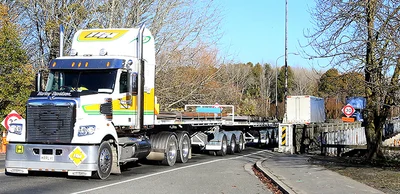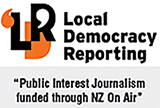How to build a bridge and get over it

It is set to be a big 12 months ahead for the Ashburton District Council to push to get the second bridge project across the line.
The council is making all the right moves, Ashburton Mayor Neil Brown said, with a business case for the project sitting with Waka Kotahi for consideration, but it is not a given that it will get the green light.
Brown is confident they have a strong case, but accepts the big unknown is what projects the other 66 territorial authorities are putting forward that could push Ashburton’s second bridge down the priority list.
There are some difficult and complex conversations to come in the next 12 months, Brown said, and the council will be doing everything in its power to build the bridge.
“We are happy to have those conversations. They need to be had so we can get it sorted”.
The council approved the detailed business case (DBC) for the now $113.6 million second urban bridge project in August to go to Waka Kotahi NZ Transport Agency to seek project approval.
Waka Kotahi director regional relationships, James Caygill, said the second bridge currently sits in the 2024-27 national land transport plan (NLTP) cycle, which will be finalised by the Waka Kotahi board next year.
The first step in the process is the regional land transport plan, which will have the Canterbury regional transport committee prioritise the projects that are put forward by the councils within the region.
“That regional package, and every other one like it from around, go into that national prioritisation process that builds the NLTP,” Caygill said.
The NLTP decisions are shaped by the Government’s policy statement on land transport, Caygill said, which sets the priorities projects are judged against and sets Waka Kotahi’s spending.
That is how a project gets approved but it also needs to be funded.
“We have done the business case and it’s gone to Waka Kotahi for their consideration and the next step is funding the gap,” Brown said.
BRIDGING THE GAP
Ashburton’s planned second bridge project has a rather large fiscal hole that is currently filled with the hope the Government comes to the party, either in part or in full.
Caygill said the project has three separate funding streams, local, national and the Crown.
The council has budgeted $7.5m towards the project, but signalled in August it will consider a larger contribution.
That decision was made when signing off the business case to go to Waka Kotahi, which showed the project costs had ballooned from the previously estimated $37m to $113.6m in the business case.
“At the moment you have a local share set aside of $7.5m and you know, given the cost escalation that occurred in the business case process, that’s probably not going to be enough,” Caygill said.
As a local road project, if the second bridge is successful in the NLTP process Caygill said it would receive Waka Kotahi’s base funding assistance rate of 51 per cent – or $57.9m.
The council’s business case suggests it is eligible for more than 51 per cent, but even if Waka Kotahi went up to 63 per cent ($70.4m) there is still a shortfall.
“Either way, when you add up the local share and our national share there is a gap,” Caygill said.
The shortfall is at least $48.2m – based on the council’s current $7.5m and Waka Kotahi’s minimum of $57.9m.
That introduces the third funding stream, the Crown.
“They are ministerial decisions to appropriate funds directly for projects that they want to go ahead,” Caygill said.
The Crown, through the $8.7 billion NZ Upgrade programme, funded the Walnut Avenue upgrade and the upcoming Tinwald corridor upgrade, and Brown believes the second bridge could receive similar treatment.
The difficulty is the second bridge is competing against every major project across the country to secure funding and approval in the next NLTP.
The Ashburton council believe they have made a strong case.
Brown said the May, 2021, floods showed that another crossing over the river is crucial for the South Island, and as well as the national significance of being a resilience project, it carries climate change benefits by opening up safer passage for walking and cycling.
BRIDGE ALIGNMENT
The council will need to have the money for the project accounted for before the project goes into the NLTP.
Council chief executive Hamish Riach said that all three parties are bound by “rigid regimes to allocate their share” and there needs to be planning alignment.
To achieve that Caygill said there will be ongoing and complex conversations between all three funding streams.
“They are not likely to be quick.
“They are interconnected – [council’s] appetite for local share, [Waka Kotahi’s] ability to fund and prioritise, and any interest from the Crown to directly fund are interrelated in terms of the figures involved.
“They are not conversations that I think can occur one after the other.
“It’s just not that simple.”
What it means is there is a lot of work and dialogue in the next 12 months to see the second bridge finally come to fruition.
BRIDGE PATHWAYS
Best case scenario, the second bridge project gets ministerial support to be crown funded and construction could start as soon as the detailed designs and tender are finalised.
Failing that, it needs to be approved in the NLTP and, with Crown funding the gap, it will be boots on the ground in 2024, or at some stage in the 2024-27 period.
The worst-case scenario is it misses the cut or falls short on funds to get pushed for consideration in the following NLTP.
The left-field option is for the council to fund the project itself, with the ratepayers footing the entire $113.6m bill. It could start as soon as the council is ready, but it would come at a heavy cost to the ratepayer.
- By Jonathan Leask

